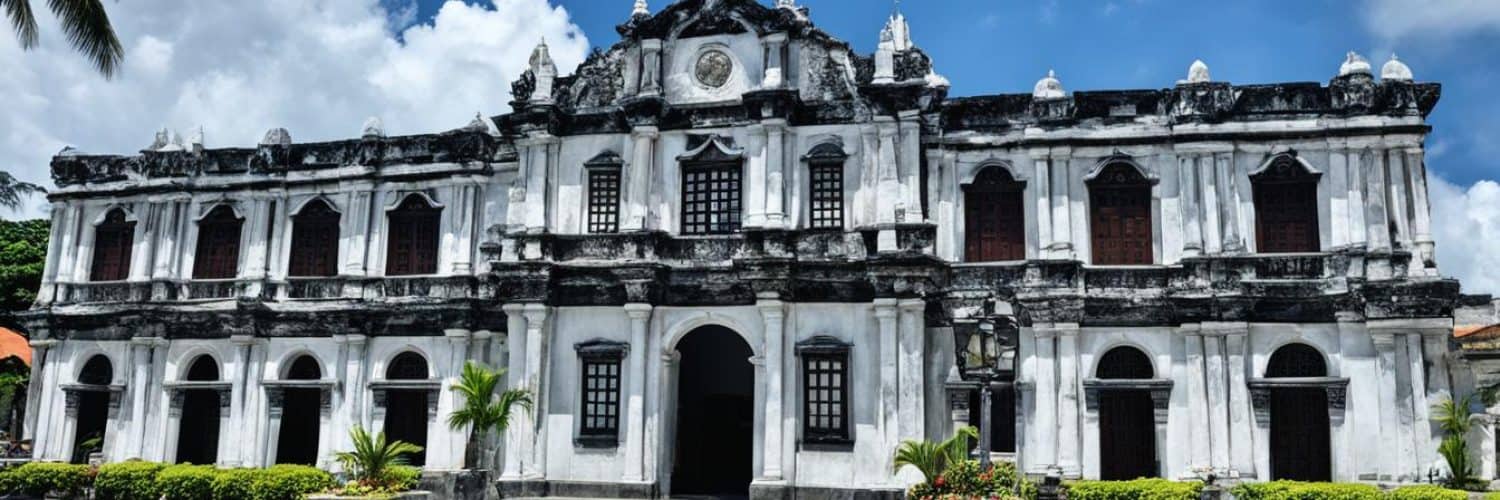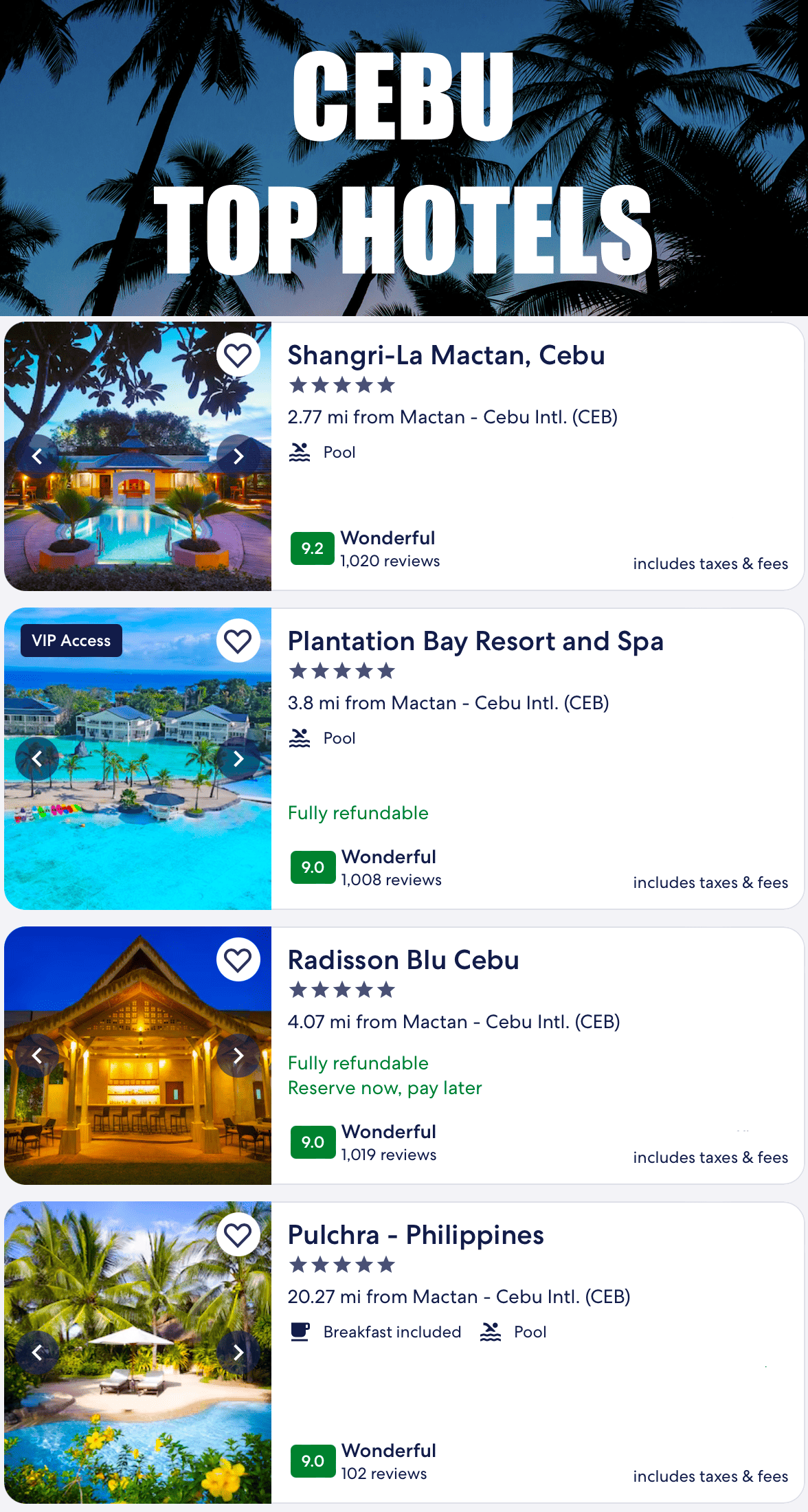Discover the rich cultural heritage of Cebu, Philippines, at Museo Sugbo, a prominent historical museum located in Cebu City. This fascinating museum takes visitors on a journey through Cebu’s past, showcasing its origins as a Spanish settlement and its role in the country’s struggle for independence.
At Museo Sugbo, you’ll find an extensive collection of artifacts and exhibits that offer a comprehensive look at the history and traditions of the region. Whether you’re a history buff or simply curious about Cebu’s heritage, a visit to Museo Sugbo is a must.
The museum provides a unique opportunity to immerse yourself in the captivating stories of Cebu, from its colonial beginnings to its vibrant present. Step back in time and explore the exhibits that highlight the cultural legacy of this beautiful city.
Key Takeaways:
- Discover the rich cultural heritage of Cebu at Museo Sugbo, a prominent historical museum in Cebu City.
- Experience a comprehensive journey through Cebu’s past through the museum’s extensive collection of artifacts and exhibits.
- Immerse yourself in the captivating stories of Cebu’s history and cultural legacy.
- Explore the origins of Cebu as a Spanish settlement and its role in the country’s struggle for independence.
- Whether you’re a history buff or simply curious about Cebu’s heritage, Museo Sugbo is a must-visit attraction.
A Glimpse Into Cebu’s Past
Cebu City, the capital of Cebu Province, is a treasure trove of historical landmarks and attractions. From the iconic Magellan’s Cross, which symbolizes the arrival of Christianity in the Philippines, to the majestic Basilica del Sto. Niño, Cebu City is steeped in history. Other notable sites include the Heritage of Cebu Monument, Yap San Diego Ancestral House, Jesuit House of 1730, Casa Gorordo Museum, and Fort San Pedro. These sites offer glimpses into the city’s colonial past and provide visitors with a deeper understanding of its cultural heritage.
Museo Sugbo, as one of the leading Philippine museums, complements these attractions by offering a comprehensive overview of Cebu’s history. With its extensive collection of artifacts and exhibits, Museo Sugbo provides visitors with a fascinating journey through the region’s past. From the Spanish colonial period to the struggle for independence, the museum showcases the rich tapestry of Cebu’s historical and cultural legacy. Whether you’re a history enthusiast or simply curious about Cebu’s heritage, Museo Sugbo is a must-visit attraction.
| Attractions | Location |
|---|---|
| Magellan’s Cross | Cebu City |
| Basilica del Sto. Niño | Cebu City |
| Heritage of Cebu Monument | Cebu City |
| Yap San Diego Ancestral House | Cebu City |
| Jesuit House of 1730 | Cebu City |
| Casa Gorordo Museum | Cebu City |
| Fort San Pedro | Cebu City |
These attractions not only offer historical insights but also provide opportunities to immerse yourself in Cebu’s vibrant culture and traditions. Exploring the city’s past through its museums and landmarks gives visitors a deeper appreciation of the region’s heritage. Whether you’re strolling through the streets of Cebu City or delving into the exhibits of Museo Sugbo, each experience reveals a glimpse into the captivating history of Cebu.
Experience Cebu’s Cultural Extravaganza: Gabii sa Kabilin
Gabii sa Kabilin is an annual event in Cebu City that offers a unique opportunity to immerse oneself in the rich cultural heritage of the region. Held from 6 p.m. to midnight, this event transforms the city into a vibrant hub of cultural activities and celebrations. Participants can indulge in a night of exploration and discovery, with a wide array of indoor and outdoor exhibits, cultural presentations, contests, food bazaars, and more.
The theme for this year’s Gabii sa Kabilin is “Pagpanag-iya (Owning our Story),” a poignant celebration that coincides with the upcoming 125th anniversary of Philippine Independence. The event aims to preserve and promote local culture and heritage by encouraging visitors to explore and appreciate the museums and historical sites in Cebu City, Mandaue, and Talisay.
This cultural extravaganza serves as a platform for cultural immersion, enabling visitors to gain a deeper understanding of Cebu’s traditions, customs, and history. It is a chance to experience the vibrant spirit and hospitality of the Cebuano people while celebrating the richness and diversity of Philippine culture.
“Gabii sa Kabilin is a celebration of our identity and a testament to our commitment to preserving our cultural heritage. Through this event, we encourage everyone to embrace and own our story, as we commemorate the journey towards Philippine Independence,” said a representative from the event organizing committee.
By participating in Gabii sa Kabilin, visitors can engage in meaningful cultural exchanges, discover hidden gems of history, and create lasting memories. It is an experience that transcends boundaries and fosters a deep appreciation for the traditions that have shaped the Cebuano identity.
Highlights of Gabii sa Kabilin:
- Indoor and outdoor exhibits showcasing the region’s cultural artifacts and historical treasures
- Cultural presentations, performances, and demonstrations
- Contests and competitions highlighting traditional arts, crafts, and music
- Food bazaars featuring local delicacies and culinary delights
- Guided tours of museums and historical sites, including a visit to the renowned Museo Sugbo
Experience the magic of Gabii sa Kabilin and let it take you on a captivating journey through Cebu’s cultural tapestry. Immerse yourself in the traditions and stories that have shaped this beautiful region, and discover the enduring spirit of the Filipino people.
The Historic Basilica Minore del Santo Niño
The Basilica Minore del Santo Niño is a significant historical landmark in Cebu City. Built in the 16th century, it not only serves as a place of worship but also holds great religious significance. The basilica houses the revered Santo Niño statue, which is believed to have been gifted by Ferdinand Magellan to Queen Juana in 1521. This statue symbolizes the Christianization of the Philippines and is the focal point of annual festivals and celebrations in Cebu. Visiting the Basilica Minore del Santo Niño provides a unique opportunity to witness the region’s devotion and experience its vibrant cultural traditions.
| Fact | Information |
|---|---|
| Location | Cebu City |
| Construction | Built in the 16th century |
| Religious Artifact | Home to the revered Santo Niño statue |
| Religious Festivals | Focal point of annual festivals and celebrations in Cebu |
| Cultural Significance | Symbolizes the Christianization of the Philippines |
Magellan’s Cross: A Symbol of the Start of Christianity in the Philippines
Magellan’s Cross holds a significant place in Philippine history as a powerful symbol of the introduction of Christianity to the country. Erected by Ferdinand Magellan in 1521, this iconic cross marks a pivotal moment in the nation’s cultural and religious transformation.
The cross stands proudly at the very spot where Rajah Humabon, Queen Juana, and their followers received the sacrament of baptism, initiating the Christianization of the Philippines. This historic event laid the foundation for the country’s predominantly Christian population and the subsequent establishment of numerous Catholic churches throughout the archipelago.
Magellan’s Cross remains a renowned destination for both locals and tourists alike, drawing visitors who are interested in Philippine history and the enduring influence of Christianity on the country’s culture.
The Birth of a Faith
This significant monument represents the turning point in the religious landscape of the Philippines. The baptism that took place at Magellan’s Cross signaled the beginning of widespread Christian belief and the subsequent conversion of the native population.
The baptism of Rajah Humabon, Queen Juana, and their followers marked the inception of Christian baptism in the Philippines. It paved the way for the transformative impact of Christianity on the country and its people for centuries to come.
A Captivating Historical Landmark
Magellan’s Cross stands as a testament to the enduring influence of Christianity in the Philippines and serves as a reminder of the country’s deep-rooted religious and cultural heritage. This historic landmark is not only a symbol of the start of Christianity but also a focal point for pilgrims and visitors seeking to explore Philippine history.
Visitor Information
- Location: Magallanes Street, Cebu City, Philippines
- Opening Hours: Daily, from 8:00 AM to 6:00 PM
- Admission: Free
Visiting Magellan’s Cross provides a unique opportunity to connect with the rich history and religious traditions of the Philippines. It is an essential stop for anyone seeking to delve into the fascinating narrative of the country’s Christianization and the enduring impact of this historic event.
Exploring Cebu’s Historic Houses
When it comes to exploring Cebu’s rich colonial history and experiencing its vibrant Cebuano heritage, a visit to the historic houses of the city is a must. These architectural gems offer a fascinating glimpse into the past, showcasing the cultural and historical significance of the region. Two notable houses that stand out are the Yap San Diego Ancestral House and the Jesuit House of 1730.
Yap San Diego Ancestral House
The Yap San Diego Ancestral House, with its unique blend of Filipino and Chinese influences, transports visitors back to the late 17th century. This well-preserved house is a testament to the rich cultural heritage brought by the Chinese migrants who settled in Cebu during that time. As you walk through its halls and admire its original furniture and artifacts, you’ll gain a deeper understanding of the Filipino-Chinese community’s contributions to Cebu’s history.
One of the highlights of this ancestral house is the beautiful azotea, a traditional open-air balcony, where you can take in breathtaking views of the surrounding area. The Yap San Diego Ancestral House is a treasure trove of history and a testament to the enduring legacy of the Filipino-Chinese community in Cebu.
Jesuit House of 1730
The Jesuit House of 1730, also known as Museo de Parian, is a remarkable architectural landmark that offers a captivating journey into Cebu’s colonial past. This ancestral house provides visitors with a glimpse into the vibrant history of the Jesuit missionaries who played a significant role in shaping the religious and cultural landscape of Cebu during the Spanish colonial era.
As you explore the well-preserved rooms and corridors of the Jesuit House, you’ll encounter an impressive collection of religious relics, antique furniture, and period artifacts. Each piece tells a story, shedding light on the lives of the Jesuit missionaries and the local community during that time.
The Jesuit House of 1730 stands as a testament to Cebu’s colonial history, offering a unique opportunity to immerse yourself in the rich heritage of the city.
To truly appreciate Cebuano heritage and the architectural and cultural significance of these historic houses, make sure to include visits to other notable attractions like Casa Gorordo Museum and other well-preserved ancestral houses.
| Historic House | Year Built | Highlights |
|---|---|---|
| Yap San Diego Ancestral House | Late 17th century | Filipino-Chinese heritage, original furniture, azotea |
| Jesuit House of 1730 | 1730 | Architectural gem, Jesuit history, religious relics |
| Casa Gorordo Museum | 19th century | Spanish colonial lifestyle, antique furniture, cultural exhibits |
| [Add another historic house] | [Year built] | [Highlights] |
Exploring Cebu’s historic houses is a captivating journey into the region’s colonial history and Cebuano heritage. These well-preserved architectural wonders provide a tangible connection to the past, offering visitors a deeper appreciation of Cebu’s rich cultural legacy.
Cebu Province: A Melting Pot of Culture and Natural Beauty
Cebu Province, situated in the Visayan region of the Philippines, is a captivating destination that offers a unique blend of cultural tapestry and awe-inspiring natural attractions. As the earliest Spanish settlement in the country, Cebu has developed into a vibrant melting pot of diverse cultures and influences.
One of the highlights of Cebu Province is its breathtaking natural beauty. From picturesque beaches to stunning islands, the province boasts a wide range of natural attractions that cater to various interests. Bantayan Island, known for its pristine white sand beaches and crystal-clear waters, provides the perfect escape for beach lovers seeking relaxation and tranquility. Malapascua Island, on the other hand, is a paradise for divers, offering incredible underwater sights such as thresher sharks and colorful coral reefs. And for adventure enthusiasts, Moalboal is a haven for snorkeling and diving, with its diverse marine life and vibrant coral formations.
But Cebu Province is not just about its coastal wonders. The region is also home to magnificent waterfalls that showcase nature’s raw beauty. Kawasan Falls, with its cascading turquoise waters and lush surroundings, offers a refreshing retreat for those seeking a respite from the heat. Aguinid Falls, with its multi-tiered cascades and natural rock formations, provides a truly enchanting experience as visitors navigate its captivating trails.
In addition to its natural wonders, Cebu Province is teeming with cultural heritage and traditions that are deeply rooted in its history. The province is known for its vibrant festivals that celebrate the region’s rich cultural tapestry. The Sinulog Festival, held annually in Cebu City, is a colorful and lively event that honors the Santo Niño (Child Jesus) and showcases traditional dances and performances. This festival is a testament to the strong religious devotion and colorful traditions of the Cebuanos.
To truly immerse yourself in the cultural fabric of Cebu, exploring the historic houses in the region is a must. These well-preserved structures bear witness to Cebu’s colonial past and offer a glimpse into its architectural and cultural heritage. The Yap San Diego Ancestral House and Jesuit House of 1730 are just some of the remarkable houses that provide fascinating insights into Cebuano history and tradition.
To summarize, Cebu Province in the Visayan region of the Philippines is a captivating destination that offers a rich tapestry of culture and natural beauty. With its stunning beaches, breathtaking waterfalls, vibrant festivals, and historic houses, Cebu Province provides a truly immersive experience for travelers seeking a diverse range of experiences. Whether you’re a nature enthusiast, a history buff, or simply looking to soak in the local culture, Cebu Province is sure to leave a lasting impression.
Cebu Province: A Melting Pot of Culture and Natural Beauty
| Natural Attractions | Cultural Experiences |
|---|---|
| Bantayan Island | Sinulog Festival |
| Malapascua Island | Historic Houses |
| Moalboal | Jesuit House of 1730 |
| Kawasan Falls | Yap San Diego Ancestral House |
Celebrating Cebu’s Vibrant Festivals
Cebu is renowned for its vibrant festivals that showcase the region’s cultural heritage and community spirit. These celebrations offer a glimpse into the vibrant culture and traditions of Cebu, providing locals and visitors with unforgettable experiences.
Sinulog Festival
The Sinulog Festival, held annually in January, is a colorful street parade that honors the Santo Niño de Cebu. This grand event unites locals and visitors in a joyous celebration of faith and gratitude. The festival features vibrant costumes, traditional dances, processions, and street parties. Sinulog is not just a festival; it is a testament to the deep-rooted religious devotion and cultural pride in Cebu.
Kadaugan sa Mactan
The Kadaugan sa Mactan festival pays tribute to Lapu-Lapu and his warriors, who triumphed over the Spanish forces in the historic Battle of Mactan. This festival showcases the bravery and heroism of the Filipino people and celebrates their victory in defending their homeland. Kadaugan sa Mactan features reenactments, cultural performances, and exhibitions that bring history to life.
Pintos Festival
The Pintos Festival highlights the agricultural heritage of Bogo City. This lively festival pays homage to farmers by showcasing their bountiful harvest through showcases, floats, street dancing, and grand parades. Pintos Festival is a vibrant celebration of rural life and the importance of agriculture in the region’s economy and culture.
Karansa Festival
The Karansa Festival in Danao City is a colorful and lively celebration that showcases traditional Cebuano dance and music. During the festival, participants don vibrant costumes and perform the Karansa dance, a rhythmic and joyful cultural dance that symbolizes unity and harmony. The Karansa Festival is a true reflection of Cebu’s rich cultural heritage and the spirit of its people.
Mantawi Festival
Every May, Mandaue City celebrates its historical, cultural, and industrial legacy through the Mantawi Festival. This vibrant event features street dances, colorful parades, beauty pageants, and trade exhibits that showcase Mandaue City’s progress and contribution to Cebu’s development. The Mantawi Festival is a testament to the resilience and innovation of the city’s people.
Immerse yourself in the energy and vibrancy of Cebu’s festivals, and witness the rich cultural heritage that unites the people of this captivating region.
Indulge in Cebu’s Gastronomic Delights
Cebu is a culinary paradise that will tantalize your taste buds with its diverse range of gastronomic delights. One dish that takes center stage in Cebuano cuisine is Lechon Cebu, a succulent and mouthwatering roasted pig. Renowned for its crispy skin and flavorful meat, Lechon Cebu is a must-try delicacy that embodies the rich culinary heritage of the region.
Feasting on Lechon Cebu is a celebratory experience in itself, often served as the star attraction at festive gatherings, weddings, and special occasions. The slow-roasting process creates a delectable combination of juicy meat and irresistible crackling skin, making each bite a true delight.
Another culinary gem of Cebu is Sutukil, a feast for the senses that showcases the region’s unique cooking methods and flavors. Sutukil is a combination of three distinct cooking styles: grilling, stewing, and serving raw dishes. Whether you prefer succulent grilled seafood, rich and flavorful stews, or the freshness of raw fish and shellfish, Sutukil offers a diverse array of dishes to satisfy every palate.
Exploring the vibrant and diverse food scene in Cebu is an essential part of experiencing the region’s cultural heritage and culinary prowess. From savoring the iconic Lechon Cebu to indulging in the flavors of Sutukil, you’ll discover the rich tapestry of Cebuano cuisine and the passion that goes into each and every dish.
Experience Cebu’s Gastronomic Delights:
- Taste the crispy, flavorful Lechon Cebu, a Cebuano culinary masterpiece.
- Delight in the diverse flavors of Sutukil, a fusion of grilling, stewing, and raw dishes.
- Indulge in a gastronomic adventure by exploring local food markets, street food stalls, and traditional Cebuano restaurants.
- Sample other Cebuano specialties like puso (hanging rice) and danggit (dried fish).
- Immerse yourself in the vibrant food culture of Cebu through culinary tours and cooking classes.
Indulging in Cebu’s culinary delights is not just about satisfying your taste buds; it’s about immersing yourself in the vibrant culture and heritage of the region. The flavors, aromas, and techniques passed down through generations tell a story of the Cebuano people and their deep connection to their culinary traditions.
Conclusion
Museo Sugbo, located in Cebu City, is a treasure trove of historical heritage and provides a truly immersive cultural immersion experience. Through its extensive collection of artifacts and exhibits, the museum offers visitors a deep dive into the rich history of Cebu. From the region’s colonial past to its vibrant festivals and gastronomic delights, exploring Museo Sugbo and the attractions of Cebu City is a must for history enthusiasts, adventure seekers, and food lovers alike.
By delving into Museo Sugbo, visitors can gain a comprehensive understanding of Cebu’s historical heritage. The museum’s captivating displays and interactive exhibits bring the past to life and provide unique insights into the region’s cultural traditions. Furthermore, events like Gabii sa Kabilin offer a glimpse into the vibrant cultural tapestry of Cebu City, allowing visitors to immerse themselves in the local customs and traditions.
Cebu City’s historical houses and landmarks, such as the Basilica Minore del Santo Niño and Magellan’s Cross, further contribute to the appreciation of the region’s rich history. The combination of these attractions, coupled with the natural beauty of Cebu’s beaches, waterfalls, and mountains, creates a truly unforgettable experience for every traveler.
For those looking to explore the historical heritage and experience authentic cultural immersion, Museo Sugbo and Cebu City offer an unmissable opportunity. Dive into the captivating past, embrace the vibrant festivals, and savor the gastronomic delights of this enchanting destination, as you embark on a journey through Cebu’s fascinating history and cultural traditions.
FAQ
What is Museo Sugbo?
Museo Sugbo is a prominent historical museum located in Cebu City, Philippines. It showcases the rich cultural heritage of the region through its extensive collection of artifacts and exhibits.
What can I expect to see at Museo Sugbo?
At Museo Sugbo, you can expect to see a comprehensive overview of Cebu’s history, from its origins as a Spanish settlement to its role in the country’s struggle for independence. The museum features exhibits on Cebu’s colonial past, traditions, and significant historical events.
Are there other museums in Cebu City?
Yes, Cebu City is home to several other notable museums, including the Casa Gorordo Museum, Yap San Diego Ancestral House, and the Jesuit House of 1730. These museums offer insights into Cebu’s colonial history and cultural heritage.
What is Gabii sa Kabilin?
Gabii sa Kabilin is an annual cultural event held in Cebu City. It celebrates the region’s rich cultural heritage and offers a night of cultural immersion with activities spread across Cebu, Mandaue, and Talisay cities. The event includes museum visits, cultural presentations, contests, and food bazaars.
What is the significance of Basilica Minore del Santo Niño?
The Basilica Minore del Santo Niño is a historically significant landmark in Cebu City. It is not only a place of worship but also houses the revered Santo Niño statue, which symbolizes the Christianization of the Philippines. The basilica is a focal point of religious festivals and celebrations in Cebu.
What is the story behind Magellan’s Cross?
Magellan’s Cross was erected by Ferdinand Magellan in 1521 and marks the introduction of Christianity to the Philippines. It stands at the site where Rajah Humabon, Queen Juana, and their followers received baptism, signifying the inception of Christian baptism in the country. Magellan’s Cross remains as a significant symbol in Philippine history.
What historic houses can I explore in Cebu?
Cebu is home to several historic houses that offer insights into the region’s colonial past. Some notable examples include the Yap San Diego Ancestral House, which showcases Filipino-Chinese heritage, and the Jesuit House of 1730, a remarkable architectural gem that provides a glimpse into Cebu’s colonial history.
What attractions are there in Cebu Province?
Cebu Province offers a diverse range of attractions, including stunning natural landscapes such as Bantayan Island, Malapascua Island, and impressive waterfalls like Kawasan Falls and Aguinid Falls. The province also features historic landmarks like Fort San Pedro and beautiful mountains like Osmena Peak and Mount Lanaya.
What festivals can I experience in Cebu?
Cebu is renowned for its vibrant festivals. The Sinulog Festival, Kadaugan sa Mactan, Pintos Festival, Karansa Festival, and Mantawi Festival are just a few examples. These festivals showcase the region’s rich cultural heritage and provide an opportunity to witness traditional dances, music, and religious processions.
What are some popular dishes in Cebu?
Cebu is known for its culinary delights, with Lechon Cebu being one of the most famous dishes. It is a succulent roasted pig with crispy skin and flavorful meat. Sutukil, a combination of grilling, stewing, and raw dishes, is also a must-try. Cebuano cuisine offers a unique blend of flavors and cooking techniques.
Why should I visit Museo Sugbo and explore Cebu City?
Museo Sugbo offers a comprehensive exploration of Cebu’s historical heritage, providing a deeper understanding of the region’s cultural roots. Pairing a visit to Museo Sugbo with exploring Cebu City’s attractions allows you to immerse yourself in the rich history, vibrant festivals, and culinary delights of the region.











Add comment